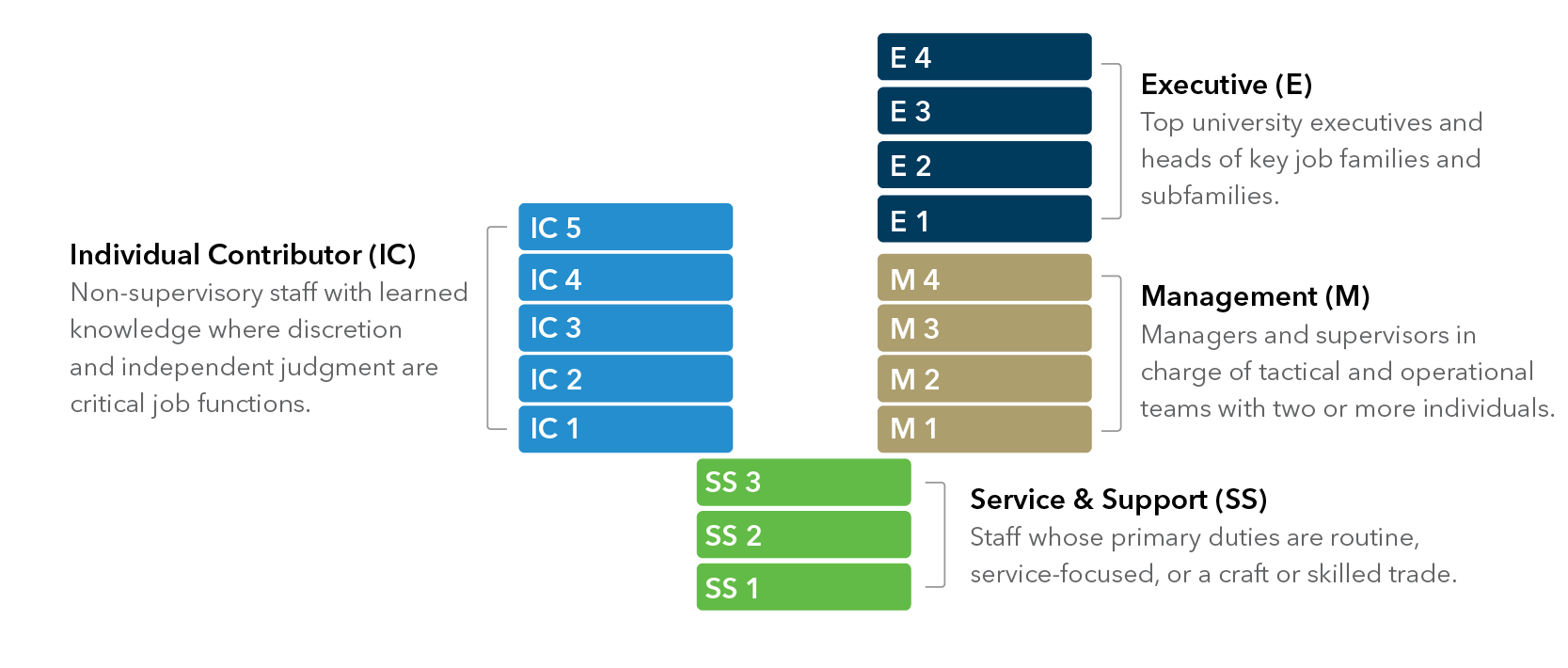Explore Your Career Path
The George Washington University (GW) classifies all of its staff and research staff jobs based on the type of work and the level of work performed in the job. There are many types of work done at GW, and we want to ensure that every type of work fits within a career path framework that can help employees know how their current job relates to other positions across the university, and what opportunities may lie ahead as they continue growing in their career.
This structure will provide information related to how to classify jobs and how to navigate the structure.
Elements of a Job Classification
Every identified job has a unique combination of four attributes that make up an employee’s job classification:
Job Family
A job family is a grouping of roles that have a similar nature of work and utilize a similar skill set, but that require differing levels and specializations of skill, effort or responsibility (e.g. Accountant vs. Budget Analyst, both in the Finance and Business family). GW has 20 job families.
Subfamily
A subfamily is a more specific specialty within the job family (e.g. Accounting and Budget are both subfamilies of the Finance and Business job family). GW has over 160 job subfamilies.
Career Stream
The university’s classification structure is centered around four career streams: service and support, individual contributor, management, and executive. Information about these streams can be found below and in the FAQs.
Level
Levels indicate the general mastery required to fill positions at that level. Multiple jobs in the same career stream can inhabit the same level. There may not be an actual position at every level within the career stream.
Y Chart
This chart visually represents the four career streams and the levels within each stream. Each subfamily has a unique combination of career streams and levels. Please note: There may not be a position associated with each career stream or level in every subfamily.
Download a printable version of this page (PDF).


